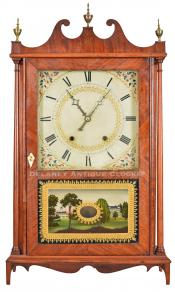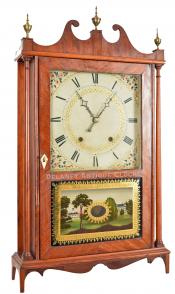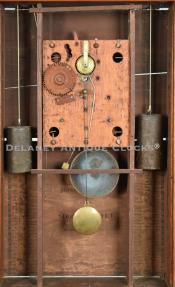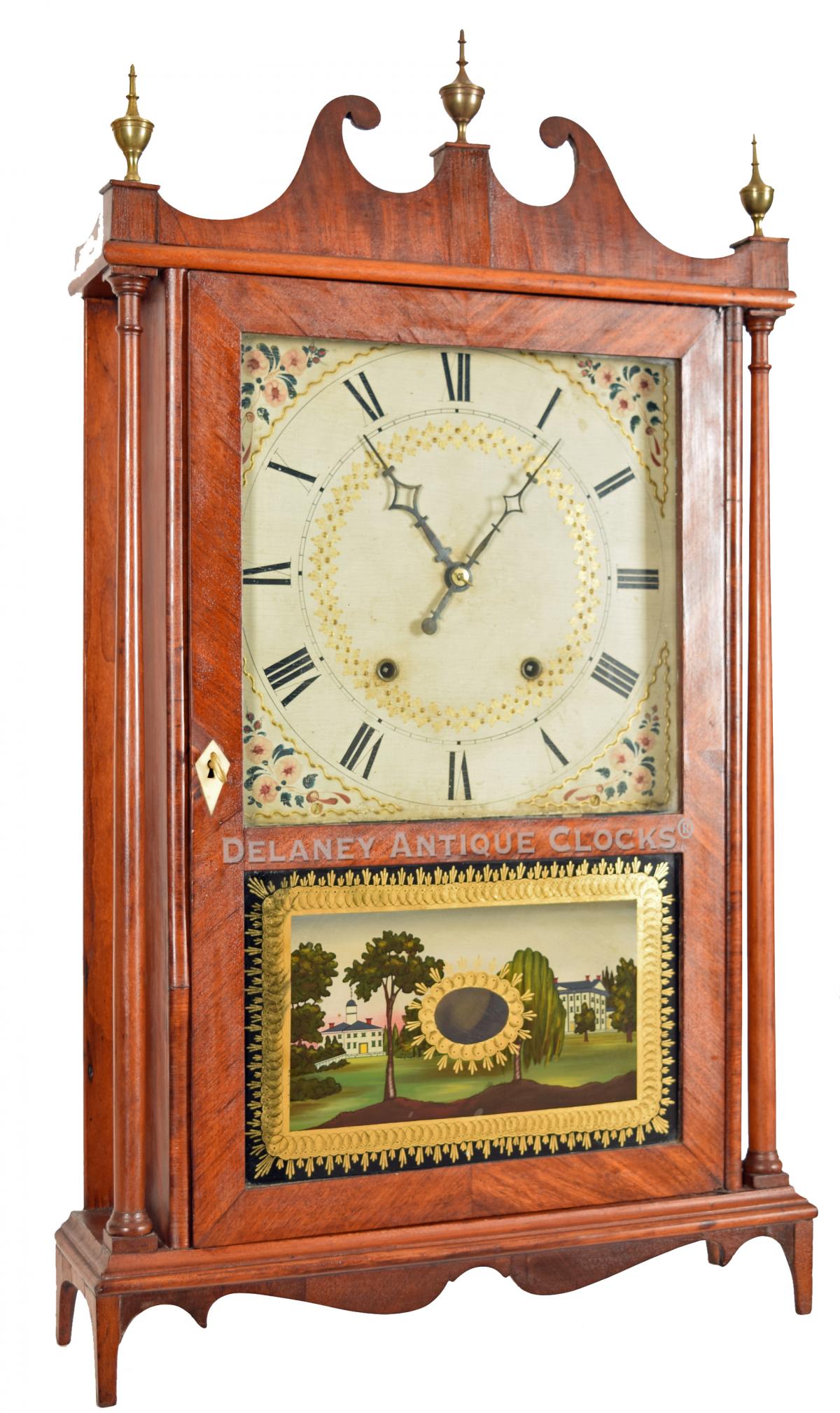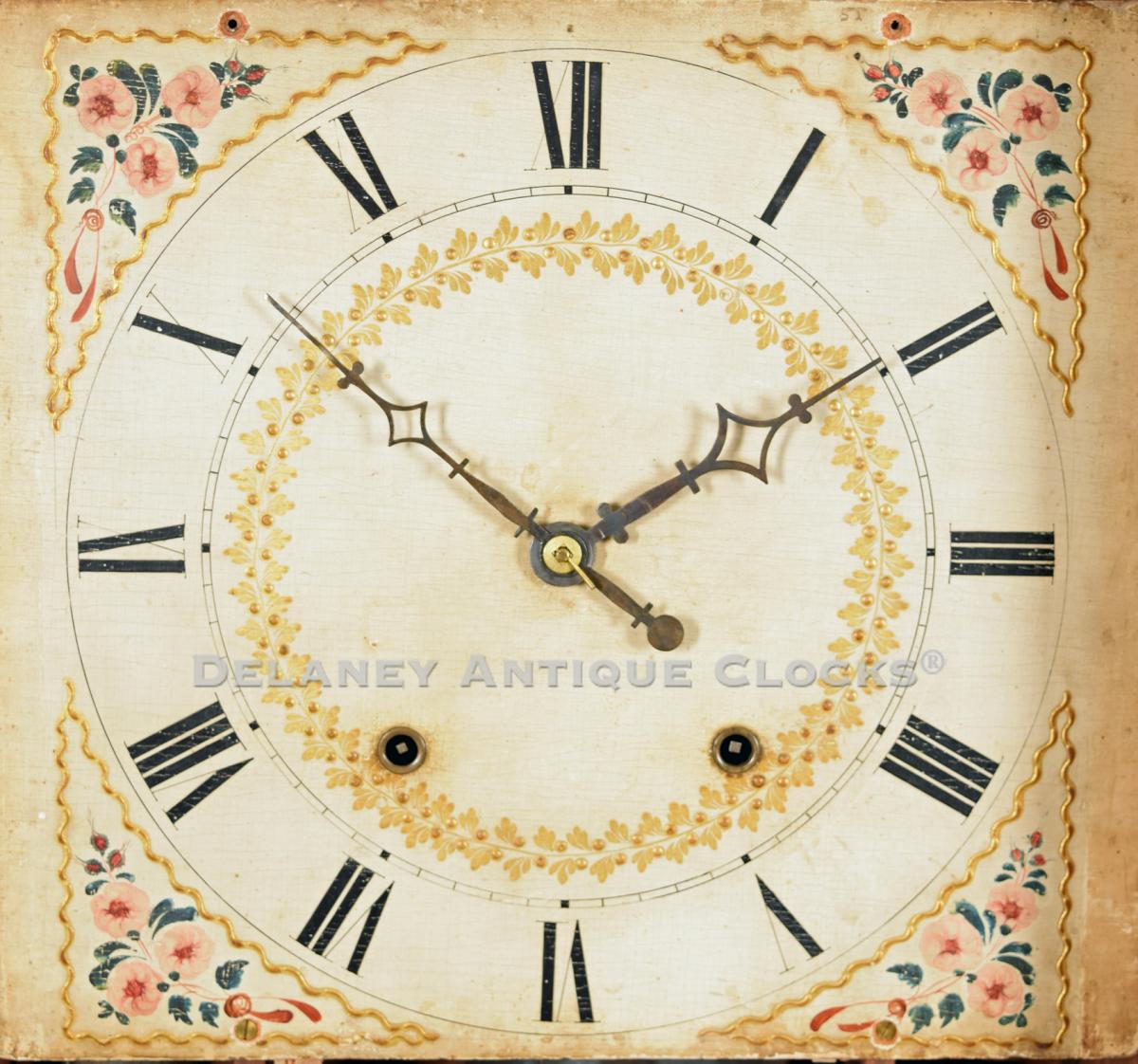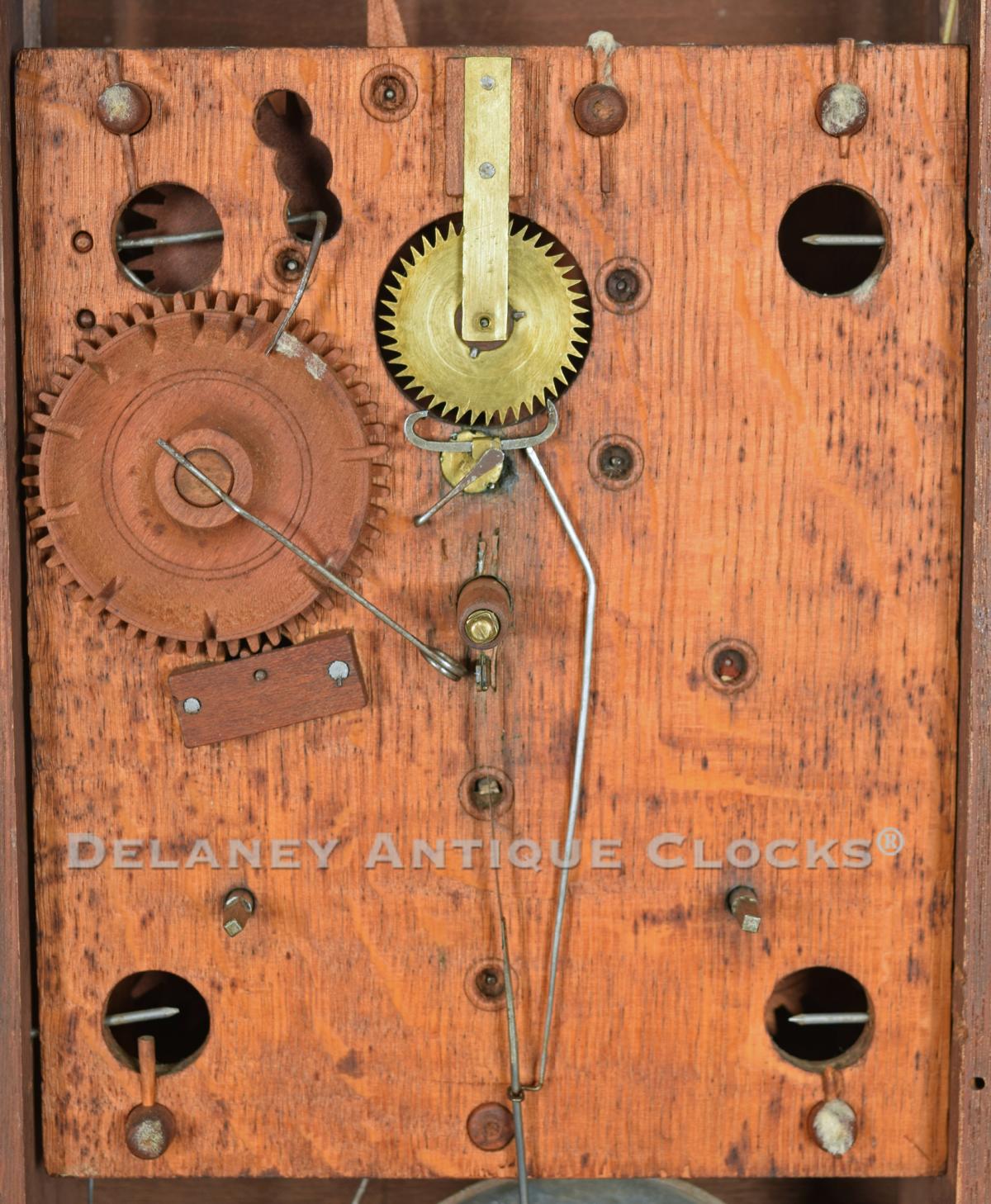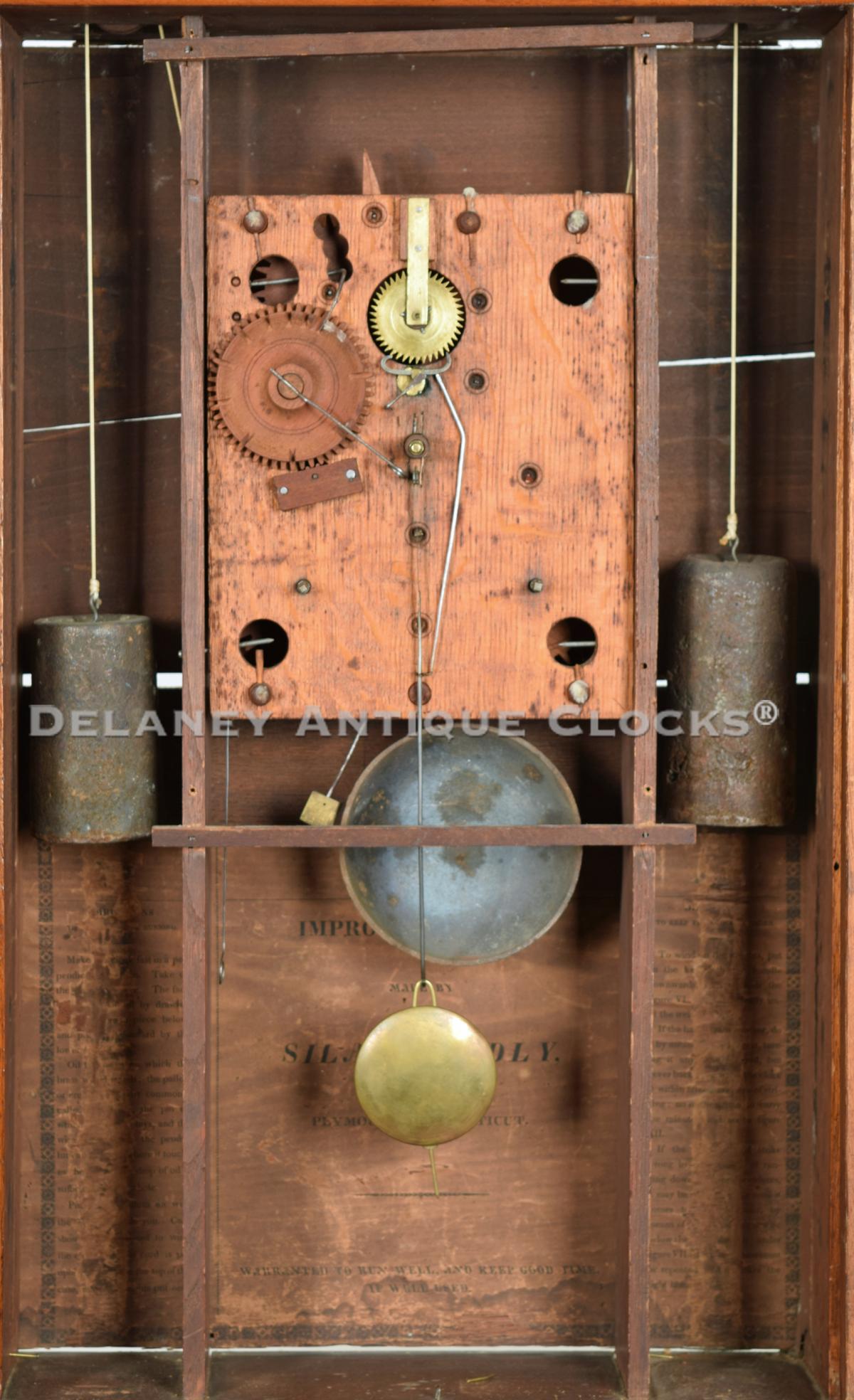A mahogany case Pillar & Scroll Clock made by Silas Hoadley, Plymouth, Connecticut. 222137.
This case design is a traditional Connecticut form, and this is a very attractive example. The case is mahogany and exhibits good graining and an older surface. It is elevated on four delicate feet that transition into a double-drop apron. An arched fret pattern is mounted to the top. The three brass finials are mounted on plinths. They are appropriate, although they are slightly undersized and later replacements. Fully turned and shaped wooden columns flank the door. The door locks closed with a key. A bone escutcheon frames the keyhole. This door is divided into two sections. The lower section features a reverse-painted tablet that has been fully restored. The traditional pastoral scene has been professionally recreated on the original glass, which remains puttied in place. The upper door panel is fitted with glass and frames the dial.
The wooden dial is paint-decorated. An interior minute ring supports the Roman-style hour numerals. The four spandrel areas are decorated with colorful pink and red chrysanthemums.
The wooden works 30-hour weight-driven movement is a time-and-strike design and is in good condition. It strikes each hour on a bell mounted inside the case. The weights travel up and down the sides.
The Clockmaker’s label is pasted onto the backboard, stating, “IMPROVED CLOCKS, / MADE BY / SILAS HOADLEY, / PLYMOUTH, Connecticut / WARRANTED TO RUN WELL, AND KEEP GOOD TIME, / IF WELL USED.” This label is in good overall condition.
This is a classic New England clock. It is designed to fit on the colonial mantle piece of the period. It measures approximately 31 inches tall, 17.5 inches wide, and 5 inches deep. This example was made circa 1825.
Inventory number 222137.
Silas Hoadley was born in Bethany, Connecticut, on January 31, 1786. He was the son of Ammi Hoadley and Amy (Thompson) Hoadley. He first apprenticed as a joiner to his uncle Calvin Hoadley. Along with Seth Thomas, he was hired in about 1808 by Eli Terry at the age of 21 to set up and work at Terry's Ireland factory. Shortly after Terry's Porter Contract was satisfied, he and Seth Thomas bought the factory from Terry. Thomas & Hoadley continued to make tall clock movements until 1813, when he purchased Thomas's business shares. He transitioned to shelf clocks, manufacturing movements of his own design. The "Upside down" style is one of the more unique examples. In the late 1830s, he transitioned to manufacturing brass movements. He retired in 1849 as a wealthy man. Silas Hoadly died on December 28, 1870, in Plymouth, Conn.

